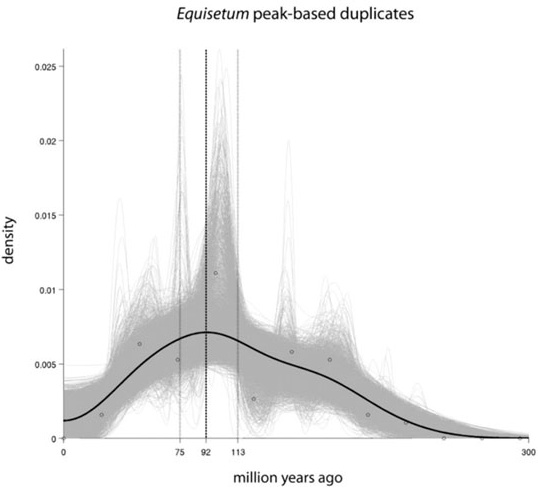Strategy
| RNA Sample | Library Construction Strategy | Sequencing Strategy |
| Sample ≥ 2 μg | Illumina PE150 Regular Library MGI PE150 Regular Library | Recommended data size≥ 6Gb |
Analysis
| Transcriptome with reference | Transcriptome without reference |
| 1. Data quality control 2. Compare with reference genome 3. Variable shear analysis 4. Variation detection 5. New transcript prediction 6. Optimization of gene structure 7. Analysis of gene expression level 8. Gene differential expression analysis 9. Differential gene function enrichment analysis | 1. Data quality control 2. Transcript assembly 3, Unigene functional annotation 4, CDS prediction 5. SSR annotation 6. Analysis of gene expression level 7. Analysis of gene differential expression 8. Differential gene function enrichment analysis |
Case Study
Case Study
Second-generation transcriptome sequencing reveals the evolution of the giant horsetail
Research Background
The giant horsetail is one of the oldest ferns. After undergoing a long and mysterious evolutionary process, the giant horsetail genome has a total of 107 chromosomes and still retains many characteristics of ancient creatures. However, research on the polyploid mechanism in the evolution of the giant horsetail is very limited, and the influence of the whole genome duplication event (WGD) on evolution is still under debate. This article analyzes the role of WGD in the evolution of the giant wooden thief by sequencing the transcriptome.
Research Method
- Extracted RNA from the mixed tissue of the stem, leaf, and strobilus of the giant horsetail, and perform Illumina sequencing. A total of 220M reads (PE40)was obtained, and the Oases software was used for de novo transcriptome assembly;
- Construct the Ks age distribution of the giant horsetail to detect replication events;
- Perform functional enrichment analysis on homoeologous genes generated by genome-wide replication events.

Results
- A total of 34,000 transcripts were assembled, with an average length of 1251bp.
- The giant horsetail has only experienced one polyploid event.
- The whole genome replication event enhances the adaptability of the giant horsetail.
References:
Vanneste et al. (2015) Horsetails Are Ancient Polyploids: Evidence from Equisetum giganteum. Plant Cell.



